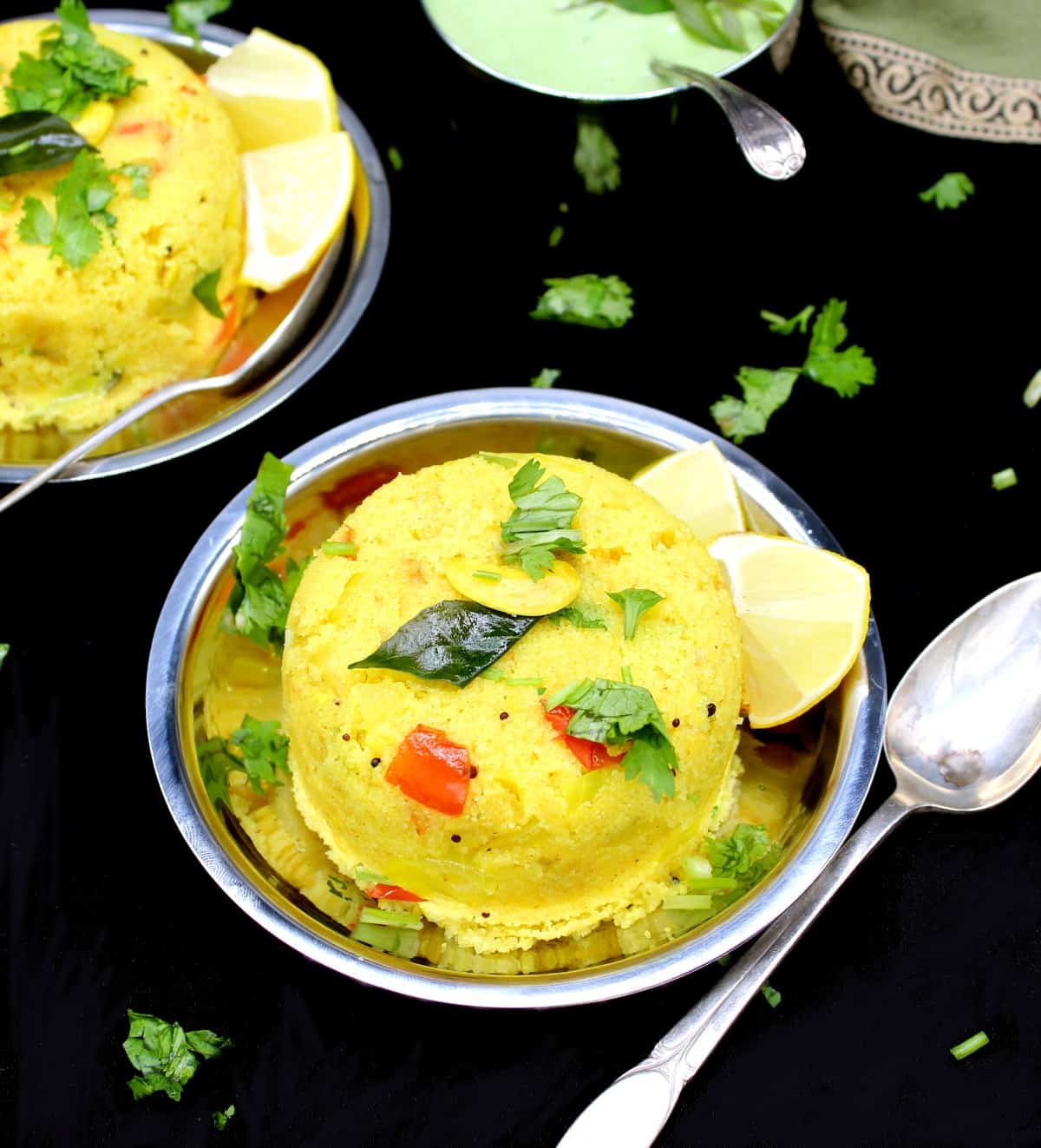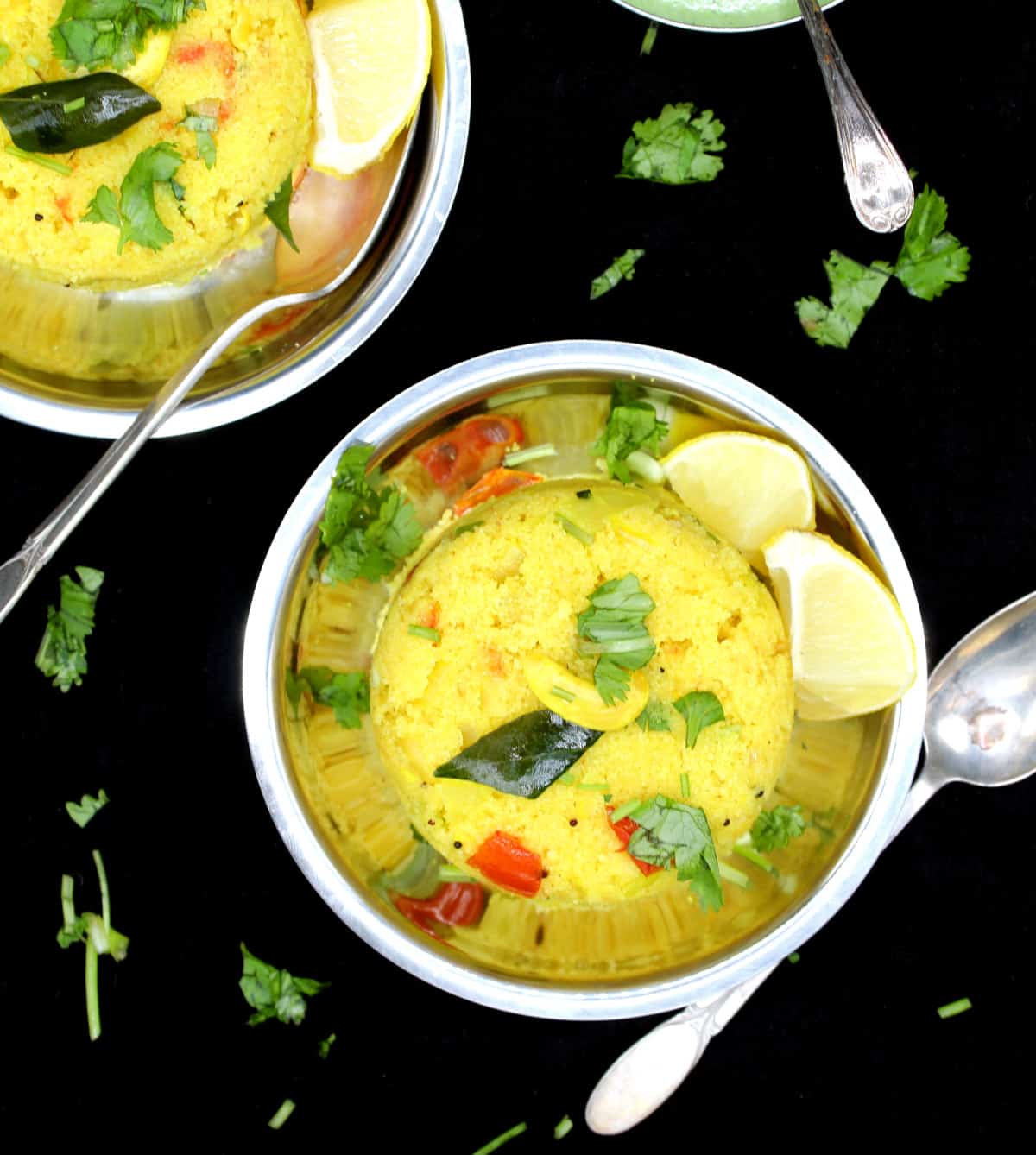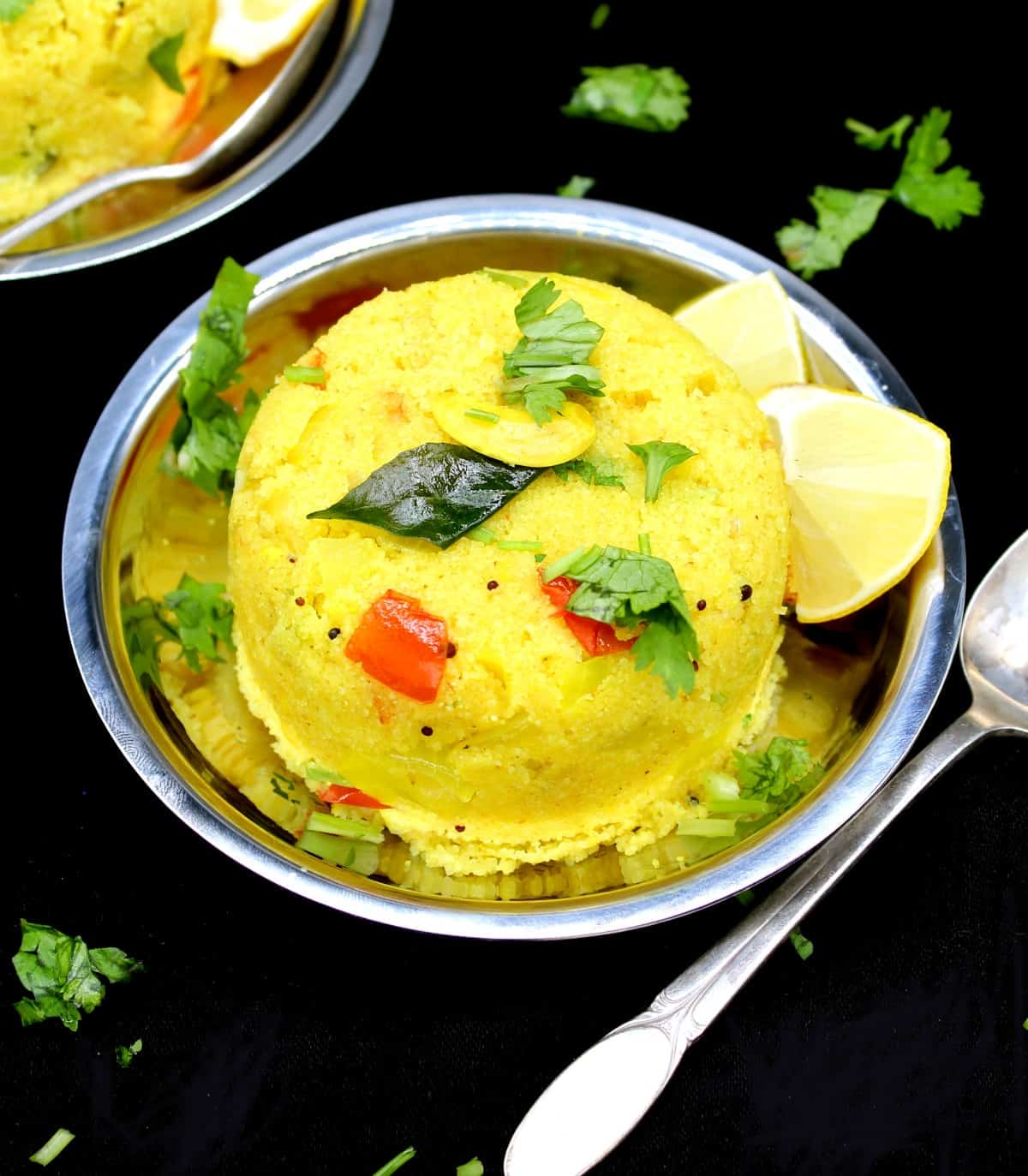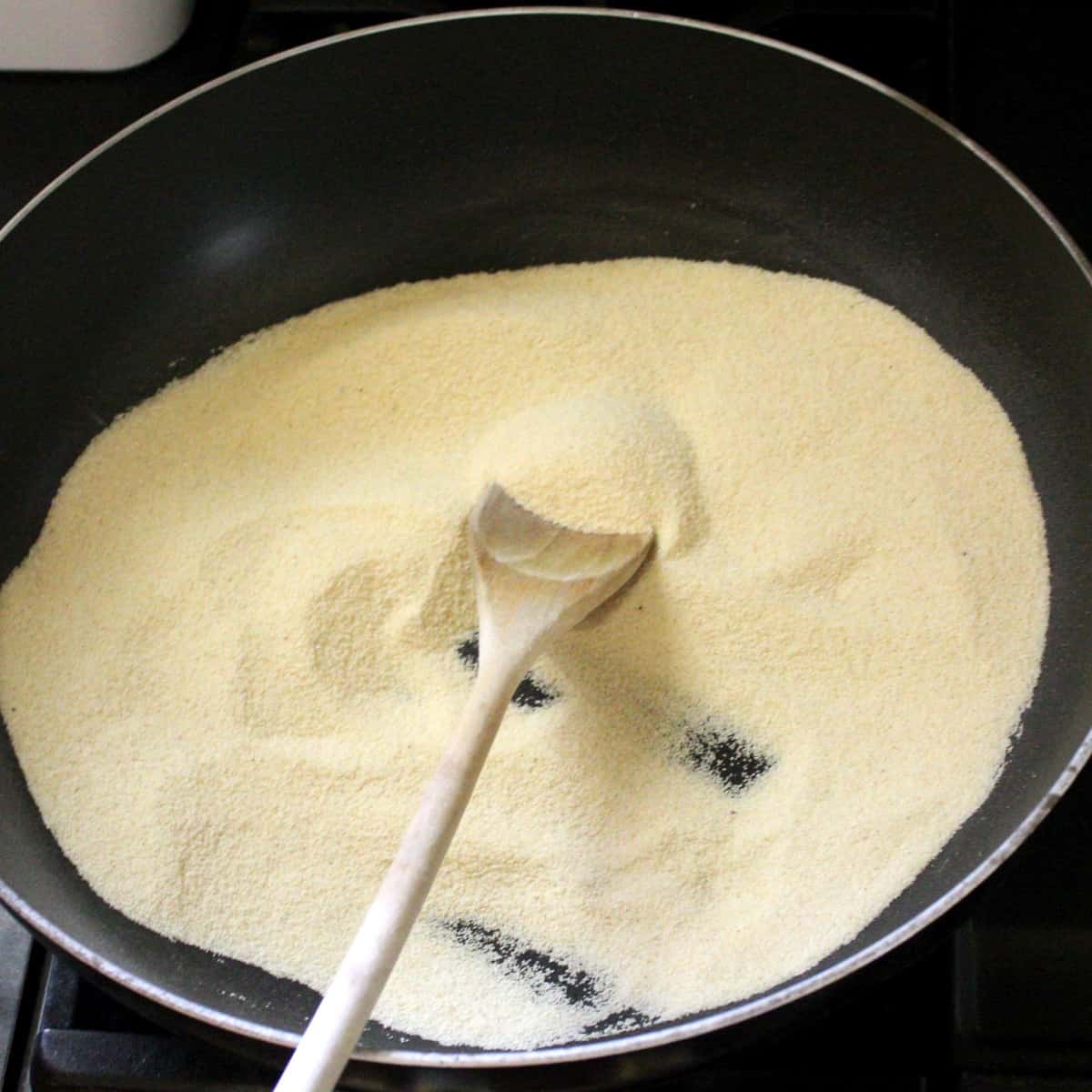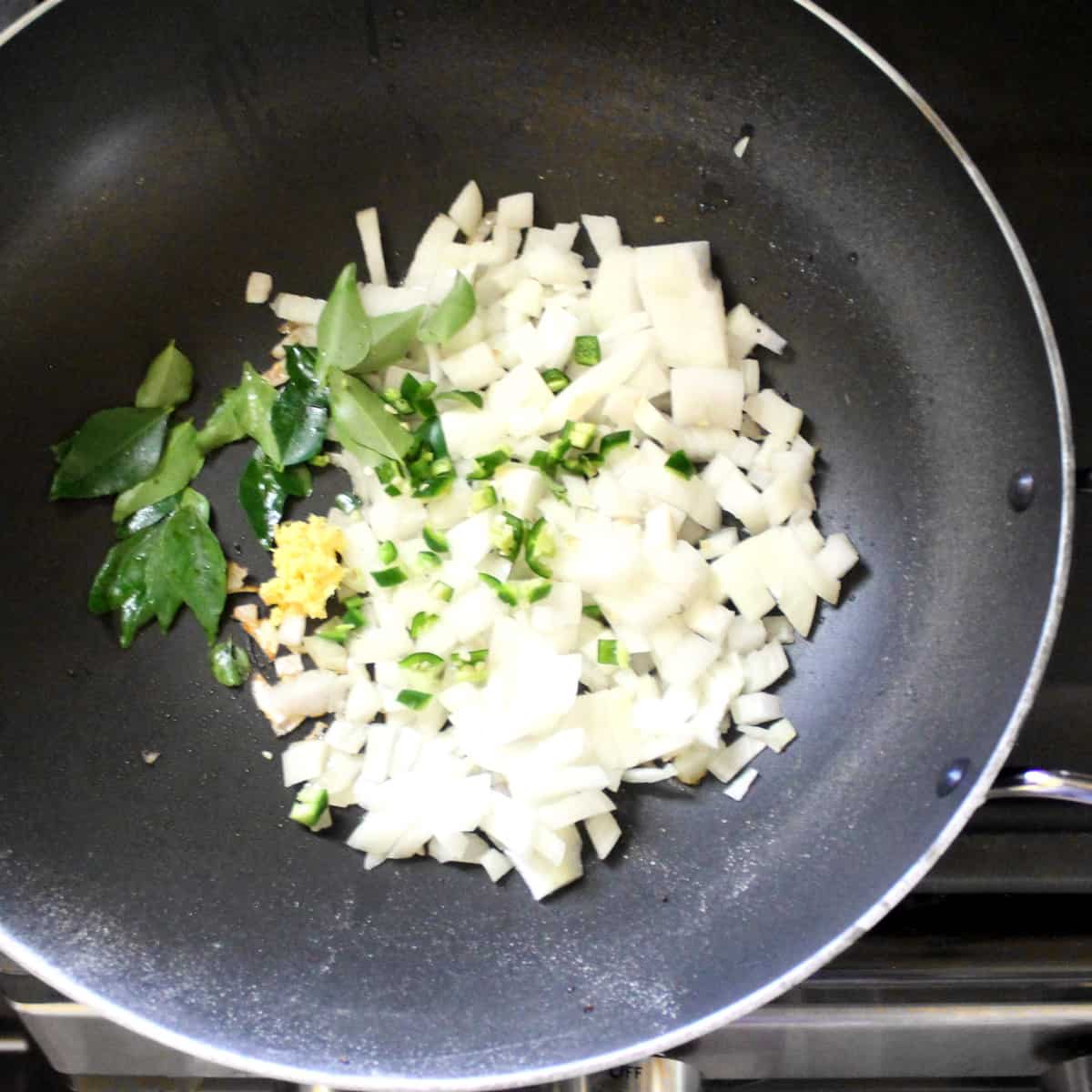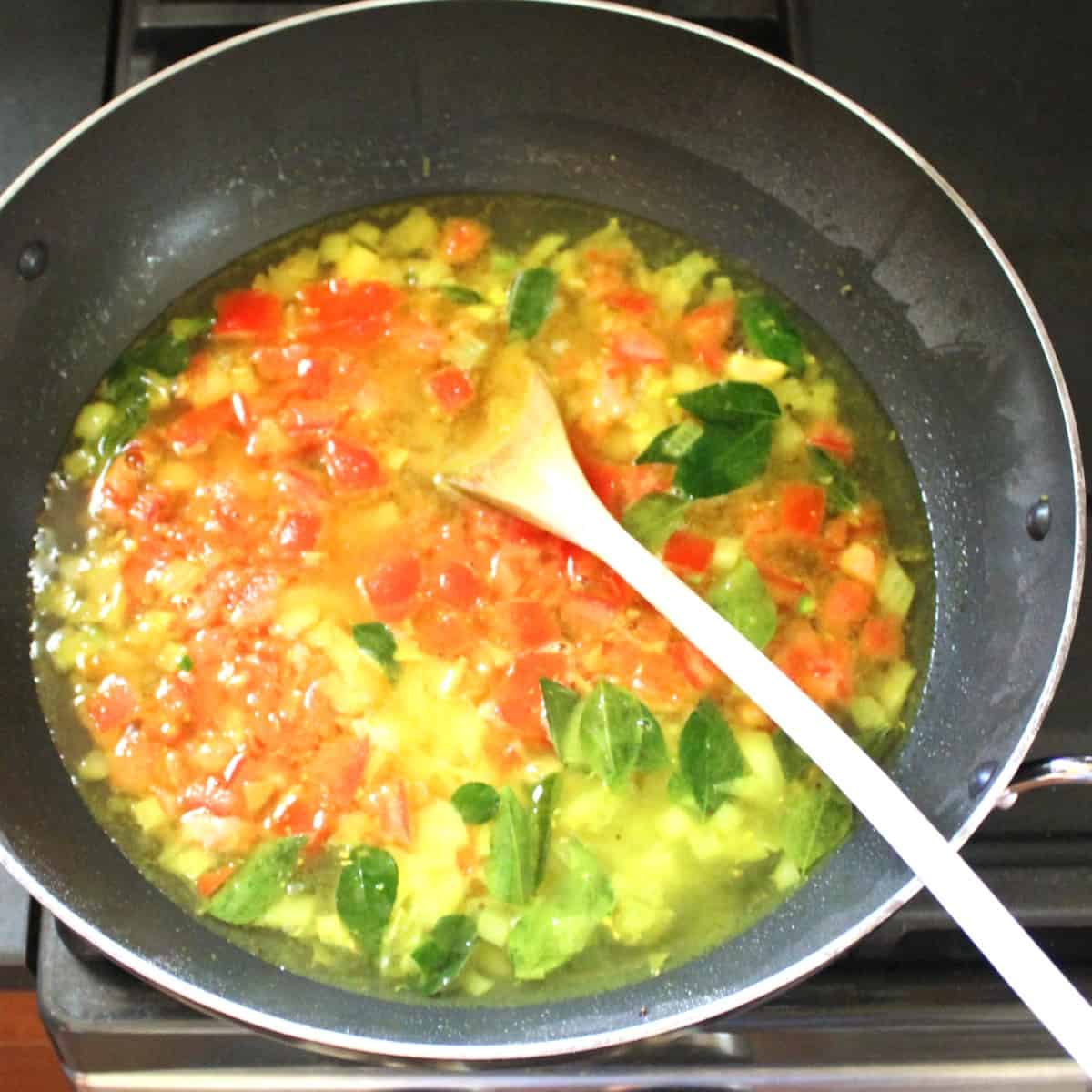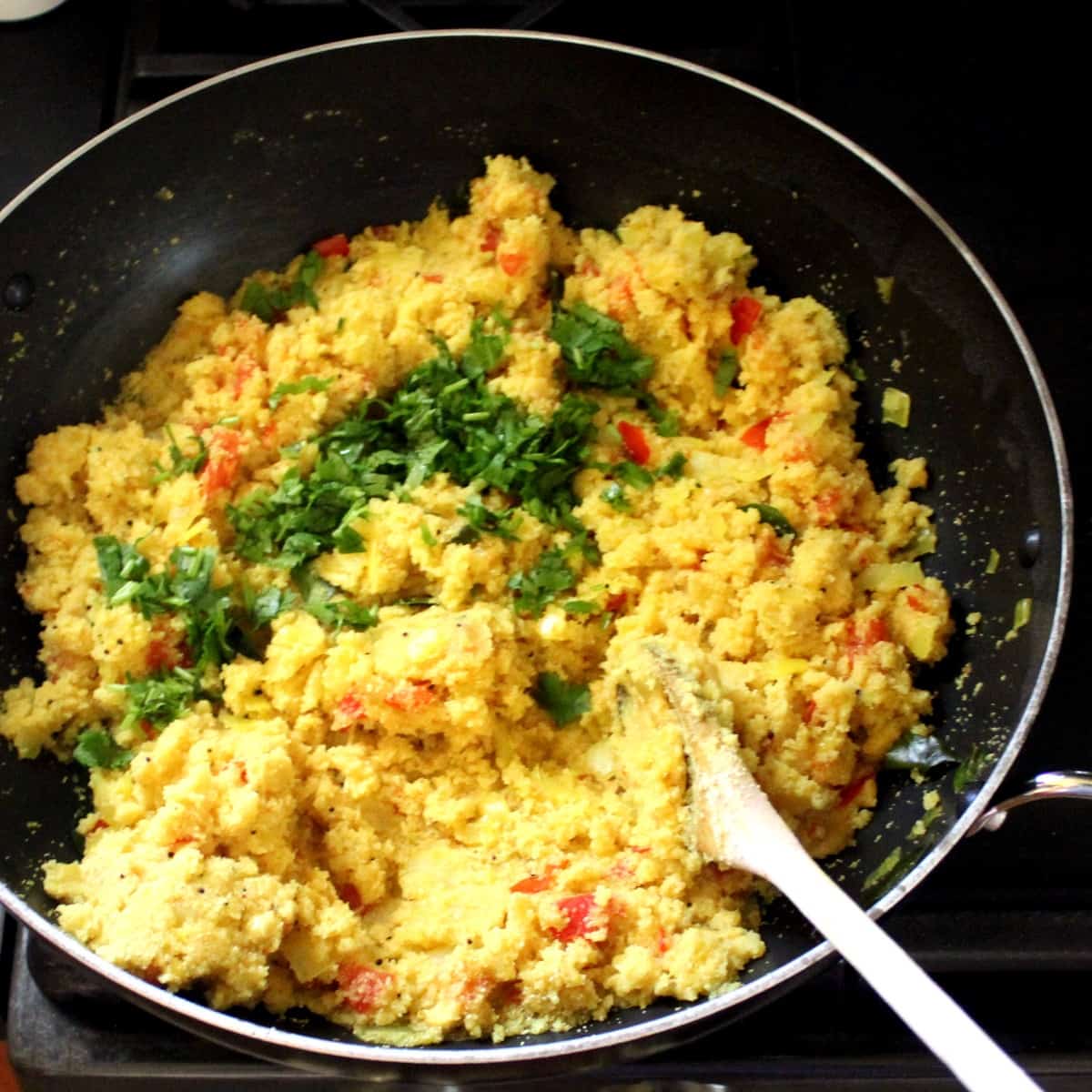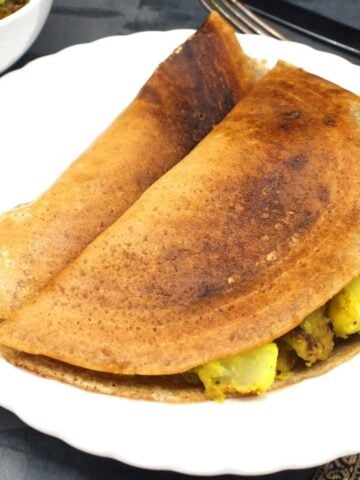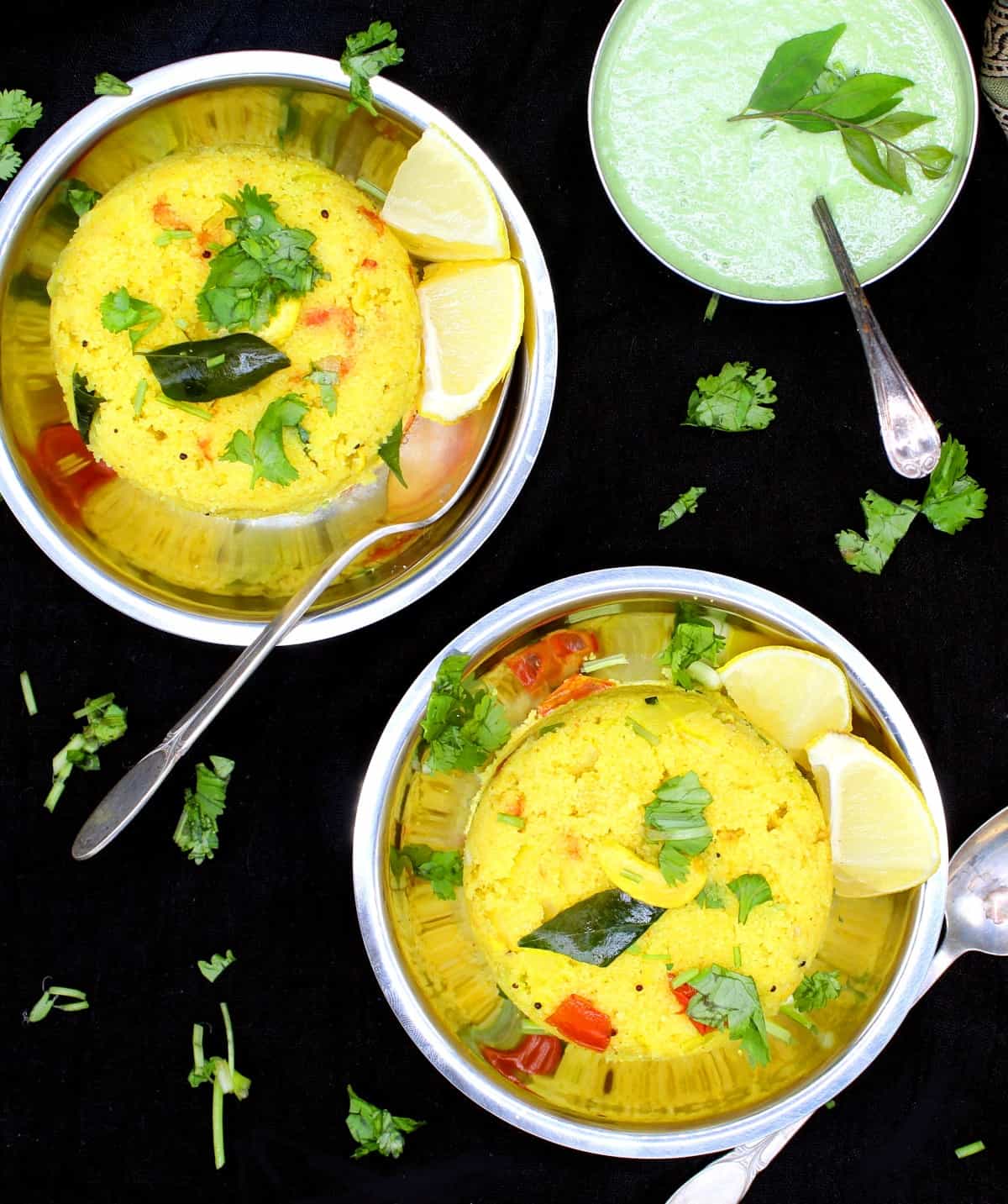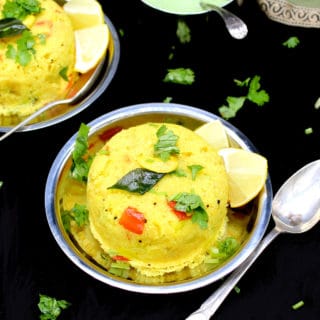Upma is something we ate often in my parents’ home, and it features with some regularity now in my kitchen when I’m looking to make a quick and nutritious breakfast that cooks up in under 30 minutes and pleases everyone. This is one of those recipes that, albeit south Indian in origin, has perhaps infiltrated every Indian household, no matter where in India it is, because it’s just that good. If you live outside India, you’ve likely encountered it on the menu of a south Indian restaurant, alongside dosa and idli. An upma is also perhaps the first dish I actually learned to cook, because it’s that simple. All you need to do is roast the rava or sooji or semolina in a wok until it’s fragrant and very lightly browned, then add in some herbs, spices and, if you want, veggies. In fact, an upma is almost foolproof and so long as you follow some basic instructions you can make sure yours turns out fluffy and delicious.
Why you’ll love this upma recipe
Super easy. Anyone can learn to make an upma. Quick. All you need is between 20 to 30 minutes and there’s no major prep work or do-ahead stuff. One-pot dish. A wok is all you need, although a large skillet will do. Everyone-approved: Kids, adults, picky eaters will all love it, especially when you drizzle on some coconut chutney. Healthy. It’s just wheat mixed up with herbs, spices and veggies and a minimum of oil. A dry, fluffy, savory pudding, if you will. Allergy-friendly. The recipe is soy-free and nut-free.
Ingredients
Sooji (rava, semolina, cream of wheat). Sooji is wheat-based and not gluten-free. If you are gluten-free, you can use rice rava or rice sooji, also available in Indian stores. Add half cup more water to the recipe if using rice rava. Vegetable oil: Coconut and peanut oil, or a flavorless oil like avocado oil are all fine. Do not use olive oil please. Mustard seeds. Use black mustard seeds, always, in Indian cooking and let them sputter in oil before you add other ingredients or they will taste bitter. Onion Green chili peppers (like serrano or jalapeno). If you like less heat deseed them. Curry leaves. These are key to the flavor of upma. If you absolutely can’t find them, add a couple of tablespoons of chopped cilantro at the time you’d add the curry leaves. Ginger. Ginger adds delicious freshness to upma. Turmeric. Turmeric is often used optionally by Indian cooks making upma. I like to add some, for both health and color. Tomatoes. I love tomatoes in upma because they add wonderful tang and flavor. Cilantro. For garnish. Grated coconut (optional). A final garnish of grated coconut adds a delicious sweetness to this savory, tangy, salty dish. Salt Lemon. To squeeze on the upma at the end, adding more flavor.
How to make upma
Begin by roasting your sooji or rava in a dry skillet or wok. While some cooks skip this step, I really like it because it makes the sooji nice and toasty and it just tastes better. You want to keep a close eye on the skillet and roast the sooji over medium heat. Stir frequently. At first it may look like nothing’s happening for a bit, but once the sooji reaches a certain temperature it will start to brown quite fast, and you don’t want it to brown too much. Just a couple of shades darker is good. When it reaches that point, remove the sooji to a dish and set aside. In the same wok, you’ll add vegetable oil, just about a teaspoon, and add to it some mustard seeds. Once the seeds start to sputter, stir in the onions, green chili peppers, curry leaves, turmeric and grated ginger. At this point you can also add a handful of chopped cashew nuts, if you like. Saute the onions until they’re translucent, you don’t need them to brown. At this point you can also add quick-cooking veggies, like grated carrots, finely chopped bell peppers, zucchini or green peas. Saute them for a couple of minutes. Add water to the wok. When you make upma, you will always need sooji and water in a 1:2 ratio. So if you have a cup of upma, you need to add two cups of water. Add enough salt to make sure that the water is saltier than you’d like your upma to be. I like adding tomatoes to my upma, but I add them only after I add the water because I don’t like the tomatoes to get all mushy and pureed. Once the water comes to a rolling boil, lower the heat to the lowest point. Now this is the only place where you really need to be careful to make sure your upma turns out fluffy and not lumpy, so pay attention. As soon as the water boils, add in the roasted sooji and then, without a second’s delay, use a ladle or a whisk to begin stirring the sooji into the water. The sooji is thirsty and it will glug up the water rapidly, so if you don’t work fast you’ll end up getting lumps of dry sooji in the upma and it won’t be loose and fluffy. And once again, make sure you do this with the heat turned down to the lowest point. As soon as this is done, turn off the heat. Garnish your upma with cilantro, spritz on lemon juice, and serve it hot.
Serving suggestions
With coconut chutney. With sambar, a South Indian style dal.
More Indian vegan breakfast ideas
Recipe card
Check to get new recipe updates by email.
